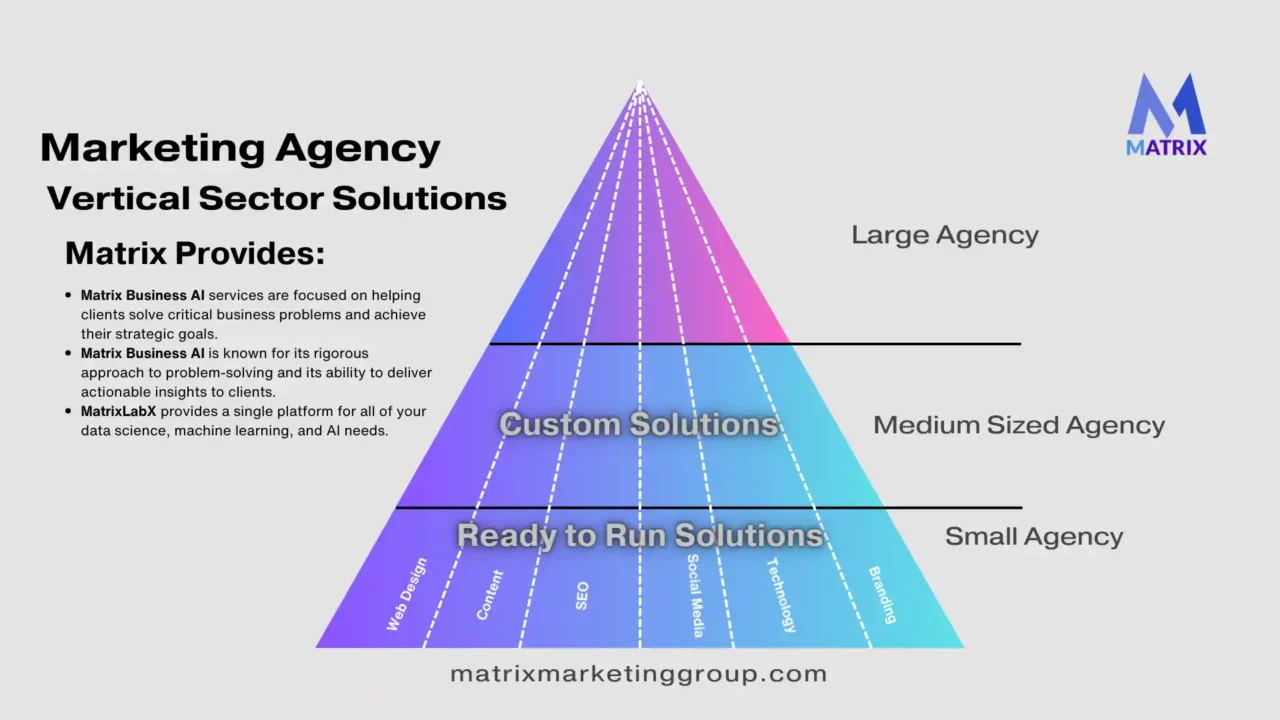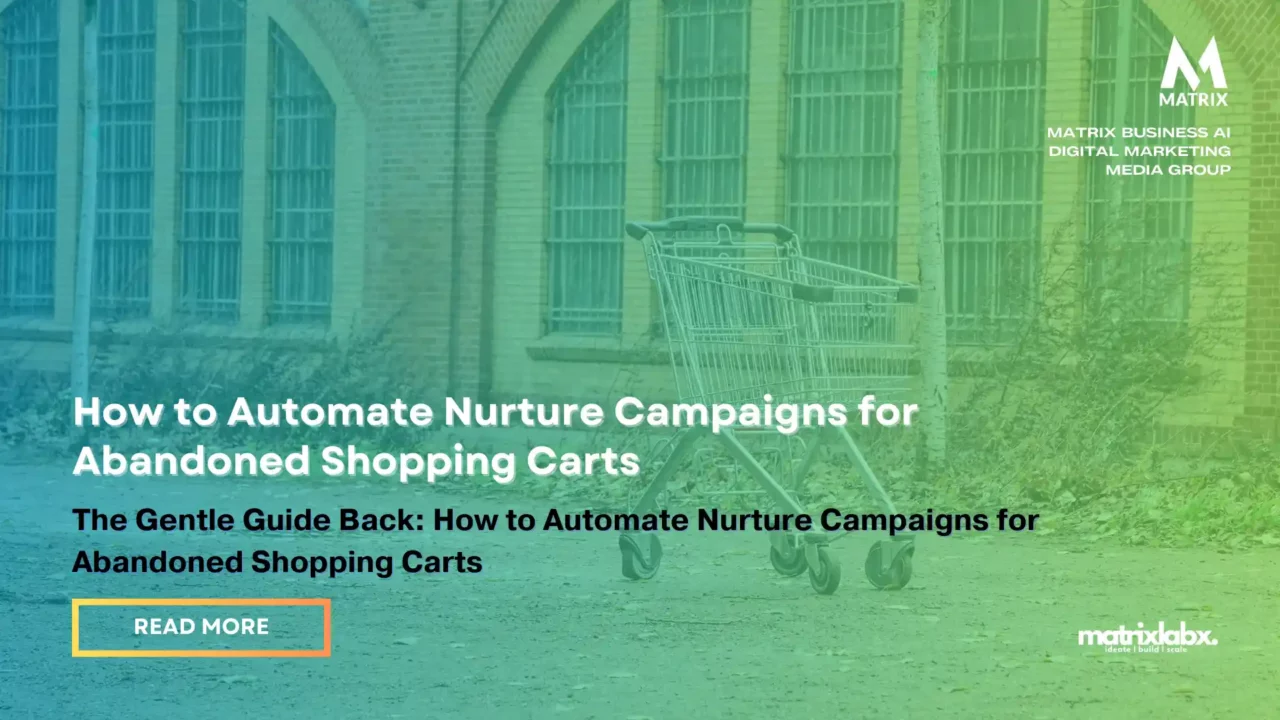The Gentle Guide Back: How to Automate Nurture Campaigns for Abandoned Shopping Carts
The Gentle Guide Back: How to Automate Nurture Campaigns for Abandoned Shopping Carts.
Imagine this: you’ve meticulously curated a shopping spree, each item whispering promises of comfort, joy, or that elusive spark of ✨extraordinary✨. Yet, with a click of the “X,” poof! It vanishes, leaving you staring at a digital ghost town.
Abandoned shopping carts – the bane of every e-commerce entrepreneur. But before you drown your sorrows in discount codes, let me introduce your new secret weapon: AI-powered nurture campaigns.
Think of these campaigns as bridge builders, reaching across the chasm between indecision and checkout.
But unlike rickety old rope bridges, these are vibrant, dynamic, and driven by the uncanny intuition of artificial intelligence. Let’s delve into the automation toolbox and unearth the magic formula for recovering those lost sales.
What will abandoned shopping carts cost the e-commerce business per year in 2024?

Predicting the exact cost of abandoned shopping carts for e-commerce in 2024 is challenging due to various factors and fluctuating market conditions.
Estimate a significant impact.
- $481 billion: A recent study by Baymard Institute estimates a global total of $481 billion in potential revenue lost due to cart abandonment in 2023. Adjusting for expected e-commerce growth could translate to over $500 billion in 2024.
- 15-25% of revenue: On average, abandoned carts represent 15-25% of e-commerce revenue. With global e-commerce sales projected to reach $5.5 trillion in 2024, this could translate to between $825 billion and $1.375 trillion in lost revenue.
Factors influencing the cost:
- Average order value: Higher average order values generally lead to higher cart abandonment costs.
- Industry: Some industries, like luxury goods, tend to have higher average order values and, consequently, higher cart abandonment costs.
- Cart abandonment rate varies depending on the industry, website design, and checkout process. A higher rate translates to higher costs.
- Recovery strategies: Effective cart abandonment recovery campaigns can significantly reduce costs by recovering a portion of lost revenue.
The impact on businesses:
- Lost revenue: The most direct impact is the lost revenue from abandoned carts.
- Reduced profitability: Cart abandonment can eat into profit margins, making it more challenging to achieve profitability.
- Marketing inefficiency: Resources spent acquiring customers who ultimately abandon their carts are wasted.
- Brand perception: High cart abandonment rates can negatively impact brand perception, leading to customer churn.
While the precise cost of abandoned shopping carts in 2024 remains uncertain, it is undoubtedly significant. E-commerce businesses must prioritize cart abandonment reduction strategies to minimize these losses and maximize their revenue potential.

Understanding the Why: A Peek into the Cart’s Psyche
First, a bit of empathy. Why do these carts turn into digital tumbleweeds in the first place? The reasons are as diverse as the products themselves.
Maybe shipping costs startled them awake, or a coupon code hiccup sent them fleeing. Perhaps indecision whispered, “Is this the perfect shade of lavender?” or life simply intervened with its grand, unscripted dramas.
This is where AI shines. Analyzing data patterns and customer behavior paints a nuanced picture of your abandonment trends. Is it high shipping costs to send them packing? A clunky checkout process? With this intel, you can tailor your nurture campaign to address their hesitations.
The First Kiss: The Art of the Initial Email
Time is of the essence, my dear. Strike while the cart’s memory is fresh within the first 24 hours. Your first email should be a friendly tap on the shoulder, not a frantic sales pitch. Acknowledge their cart’s existence with a playful reminder: “Did you leave something behind?” or “We noticed you were putting together a lovely selection!”
Keep it personalized. Use their name, highlight the items they chose, and inject a dash of humor: “Is your dog hogging the fuzzy slippers you picked out? We won’t judge (much).” Offer unobtrusive help – a forgotten promo code, perhaps, or a link to an FAQ section that addresses common worries.

The Art of the First Touch: Crafting the Perfect Initial Email for Abandoned Carts
As a marketing manager, you know the sting of abandoned carts. Those curated collections of potential purchases left to languish in the digital void. But fear not! You can transform cart deserters into devoted customers with a well-crafted initial email. Here’s how to craft that first touch that wins them back:
1. Subject Line: The Hook that Reels Them In
Intrigue is your weapon. Use catchy, personalized subject lines that pique curiosity without being spammy. Think:
- “Did you forget something special?” (Playful reminder)
- “Oops! We noticed you left something behind…” (Friendly nudge)
- “[Product name] is waiting for you! (Limited stock!)” (Scarcity trigger)
- “Is [obstacle] holding you back? We can help!” (Empathetic approach)
2. The Greeting: A Warm Welcome Back
Personalization matters. Use their name and acknowledge the existence of their cart. Ditch the robotic “Dear valued customer” – go for:
- “Hey [Name], just checking in about your amazing selection!”
- “We saw you putting together a fantastic cart – anything we can do to help?”
- “It happens to the best of us! Let’s get you back to that checkout feeling.”
3. The Gentle Reminder: Rekindle the Spark
Jog their memory without being pushy. Highlight the products they chose, using high-quality visuals and customer testimonials.
- “Remember that cozy sweater you picked out? It’s still waiting for you in your cart!”
- “Those [product type] reviews you loved? They’re waiting to be put to the test!”
- “We know you’ll love [specific feature] about [product].”
4. The Helping Hand: A Bridge Over Obstacles
Anticipate their concerns. Offer solutions to common cart abandonment triggers, like:
- “Free shipping on orders over [amount]? That might just do the trick!”
- “Forgot your discount code? No worries, here it is!”
- “Need a little more time? We offer flexible payment options.”
5. The Call to Action: The Path Back to Checkout
Make it clear and easy. Use strong CTAs that direct them back to their cart:
- “Complete your purchase now and get [special offer].”
- “Click here to revisit your cart and check out.”
- “Don’t miss out! These items are flying off the shelves.”
Bonus Tip: Personalize your emails further by segmenting your audience based on cart value, demographics, and browsing behavior. Offer VIP discounts to high-value shoppers, address budget concerns for others, and tailor your message to their specific interests.
Remember, your initial email is just the first step. Build a nurturing sequence with follow-up emails that address potential objections, further showcase product benefits, and create urgency. And most importantly, track your performance, analyze data, and refine your approach to turn those abandoned carts into loyal customers.
So, go forth, marketing manager, and wield the power of the email! Craft compelling first touches, and watch those carts roll back to checkout, one happy customer at a time.

The Nurturing Cadence: A Symphony of Persuasion
But one email is just the first note in a beautiful symphony. A well-structured nurture campaign unfolds like a series of gentle nudges, each adding momentum toward that final click. Consider this:
- Email #2 (1-2 days later): Showcase product benefits in detail. Add high-quality visuals, customer testimonials, or even product demos. Remind them why they fell in love in the first place.
- Email #3 (3-4 days later): Address potential obstacles. Offer free shipping, limited-time discounts, or flexible payment options. Show them you’re willing to meet them halfway.
- Email #4 (5-7 days later): Highlight scarcity or urgency. Mention limited stock, upcoming sales deadlines, or exclusive bundle deals. Create a sense of “don’t miss out!”
- Bonus Round: Consider adding abandoned cart pop-ups on your website, retargeting ads on social media, or even a friendly SMS reminder. Omnichannel persuasion goes a long way.
Personalization is Key: Tailoring the Melody to Each Heart
Remember, your audience isn’t a monolith. Segment your emails based on cart value, customer demographics, and browsing behavior.
A VIP discount might sway a high-value shopper, while someone on a budget might respond to a gift with a purchase. AI can help you segment and personalize for maximum impact.
Why Conversational AI is a CMO’s Dream Tool
In today’s customer-centric landscape, the Chief Marketing Officer (CMO) faces a constant challenge: delivering personalized experiences that resonate deeply with each individual customer.
This is where conversational AI transforms the marketing game and becomes a powerful weapon in the CMO’s arsenal.
Why personalization with conversational AI is a game-changer for CMOs:
1. Building Deeper Connections:
Conversational AI goes beyond static marketing messages. It enables two-way, real-time interactions with customers, allowing brands to understand their needs, preferences, and pain points on a personal level. This fosters trust, loyalty, and a sense of genuine connection.
2. Hyper-Personalization at Scale:
Imagine tailoring your marketing to every single customer. With conversational AI, it’s not just a dream. AI can analyze vast amounts of data, including purchase history, browsing behavior, and even sentiment from conversations, to deliver personalized recommendations, offers, and content in real-time. This level of individualization is impossible with traditional marketing methods.
3. Customer Journeys, Redefined:
Conversational AI can guide customers through every journey stage, from initial discovery to post-purchase support. AI-powered chatbots and virtual assistants can answer questions, resolve issues, and even offer proactive advice, creating a seamless and personalized experience that keeps customers returning for more.
4. Data-Driven Decisions:
CMOs need data to make informed decisions. Conversational AI provides rich customer insights through sentiment analysis, engagement metrics, and conversion tracking. This data empowers CMOs to optimize marketing strategies, personalize campaigns further, and allocate resources effectively.
5. Cost-Effectiveness and Efficiency:
Conversational AI can automate tasks like answering FAQs and handling basic inquiries, freeing human marketing teams to focus on higher-level strategy and creative work. This increases productivity, cost savings, and a more efficient marketing operation.
For CMOs, conversational AI is not just a tool; it’s a strategic partner. It empowers them to:
- Drive customer loyalty and brand advocacy.
- Increase engagement and conversion rates.
- Optimize marketing spend and resource allocation.
- Gain valuable customer insights.
- Stay ahead of the curve in the ever-evolving marketing landscape.
Conversational AI is not just a trend; it’s a revolution in how CMOs connect with their customers.
By embracing personalization with this powerful technology, CMOs can unlock a new marketing success era, build deeper relationships, deliver hyper-relevant experiences, and drive measurable results. So, CMOs, are you ready to unleash the power of conversational AI and personalize your way to marketing mastery?
Data, the Maestro: Orchestrating Success

Don’t just send emails and hope for the best. Track your campaign performance like a hawk. Analyze open rates, click-through rates, and conversion rates. Use this data to refine your approach, identifying what resonates and falls flat.
A/B tests different subject lines email formats, and offers to discover the perfect blend that sends your abandoned carts waltzing back to checkout.
Data, the Maestro: Orchestrating Success in Marketing
As Chief Marketing Officer (CMO), I’m intimately familiar with the cacophony of our digital landscape. Brands bombard consumers with messages across channels, each vying for a precious sliver of attention. In this symphony of noise, data emerges as the conductor, the maestro who wields the baton of insight, guiding us to marketing harmony.
Think of data as the sheet music, the intricate notes that tell the story of our customers, their desires, and their behaviors. Without it, we’re mere buskers, relying on intuition and guesswork to navigate the marketing maze. But with data as our guide, we become virtuosos, crafting campaigns that resonate deeply and drive results.
The Power of Data-Driven Decisions
Data empowers us to move beyond hunches and gut feelings. It allows us to:
- Know our audience: Demographic data paints a vivid picture of our customers – their age, location, interests, and online habits. This understanding fuels targeted campaigns that speak directly to their needs and aspirations. Imagine a clothing brand using data to identify a surge in interest in athleisure wear among young professionals. They can then tailor their marketing to showcase comfortable yet stylish workout gear, resonating perfectly with their target audience.
- Optimize campaigns in real-time: Gone are the days of setting and forgetting marketing strategies. Data analytics provide real-time insights into campaign performance, allowing us to adjust on the fly. A social media ad underperforming? Data can pinpoint the culprit – a weak headline, an unappealing image, or the wrong platform. With this information, we can tweak the ad instantly, maximizing its impact and saving precious budget.
- Personalize experiences: Data isn’t just about numbers; it’s about understanding individual customers. By analyzing purchase history, browsing behavior, and engagement metrics, we can create personalized experiences that feel like a warm embrace, not a cold sales pitch. Imagine an e-commerce store recommending products based on a customer’s past purchases and online browsing. This level of personalization fosters loyalty and increases the chances of repeat business.
Data as the Conductor of Success
Data isn’t just a tool; it’s a mindset. As CMO, I champion a data-driven culture where every decision, from campaign strategy to budget allocation, is informed by insights.
We don’t just throw spaghetti at the wall and hope it sticks; we analyze, test, and iterate, constantly refining our approach based on the data.
This data-driven approach has transformed our marketing efforts. We’ve seen:
- Increased customer engagement: By understanding their interests and preferences, we’ve created campaigns that resonate deeply, leading to higher click-through rates, conversions, and brand loyalty.
- Improved ROI: Data helps us allocate resources efficiently, focusing on channels and strategies that deliver the most value. We’ve eliminated wasteful spending and maximized our marketing budget.
- Enhanced brand reputation: We’ve built trust and fostered positive brand perception by understanding customer sentiment and addressing their concerns.
Data is no longer just a buzzword; it’s the lifeblood of modern marketing. As CMO, I urge you to embrace its power.
Let data be your maestro, guiding you to compose a marketing symphony that resonates with your audience, drives results, and, ultimately, helps your brand achieve its full potential. Remember, in the orchestra of marketing, data is the conductor, and the music you create has the power to move hearts and minds.

Stop Wasting Ads! Get Laser-Targeted Clicks (and Customers)
Tired of ad duds? Get eyeballs on your brand with laser-focused online ads that convert. Click to unleash the power of targeted marketing!

Stop Scrolling, Start Selling: Social Ads That Convert Like Crazy
Get ready to unleash the power of AI-targeted ads that turn likes into leads and leads into SALES.
Beyond Recovery: Building Lasting Relationships
Remember, recovering a cart is the first step. Use this interaction to build a lasting relationship with your customers.
Send them relevant product recommendations, personalized newsletters, and exclusive loyalty offers. Show them you value them beyond just a single transaction.
Conclusion, A Bridge Back to Conversion
Abandoned shopping carts can feel like a defeat, but with the magic of AI-powered nurture campaigns, they can become a springboard for growth.
You can transform those digital tumbleweeds into blossoming sales by understanding your customers’ motivations, crafting personalized outreach, and analyzing data to refine your approach.
As an e-commerce manager, I can’t predict the exact growth rate for online sales in 2024 with absolute certainty. However, I can share some insights based on current trends and expert forecasts:
Optimistic Outlook:
- Global e-commerce sales are expected to grow 9.4% in 2024, according to Oberlo. This would represent a continuation of the steady growth trend in recent years.
- Emerging markets like India and Southeast Asia are projected to see even higher growth rates, exceeding 14% in some cases (Statista). This presents a significant opportunity for e-commerce businesses to expand into new markets.
- Factors like increasing smartphone penetration and improved internet connectivity in developing regions are expected to fuel online shopping growth further.
- The ongoing pandemic has accelerated the shift towards online shopping, with many consumers now comfortable and confident with making purchases digitally. This trend is likely to continue in 2024.
Cautious Approach:
- Geopolitical instability and economic uncertainty could dampen consumer spending, impacting e-commerce growth.
- Rising inflation and interest rates could also decrease consumer confidence and spending.
- Certain markets’ saturation may slow overall growth, particularly in mature e-commerce economies.
My Recommendations:
- It’s important to closely monitor industry reports and forecasts to stay updated on the latest developments.
- Focus on optimizing your online store for conversion, improving website speed, mobile responsiveness, and checkout processes.
- Invest in omnichannel marketing strategies to reach your target audience across multiple channels.
- Personalize your customer experience to build loyalty and encourage repeat purchases.
- Diversify your product offerings and explore new markets to stay ahead of the curve.
By staying informed and adapting to market changes, your e-commerce business can be well-positioned to capture its share of the growing online sales market in 2024.
Remember, the future of e-commerce is dynamic, and it’s crucial to remain adaptable and data-driven to navigate the ever-evolving landscape.


